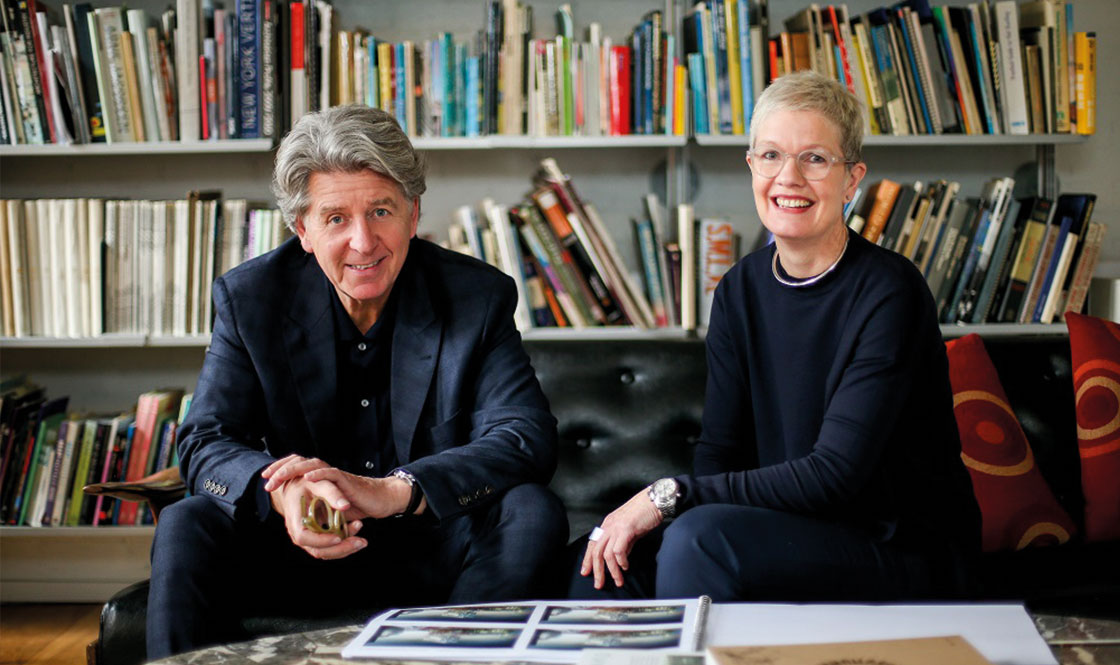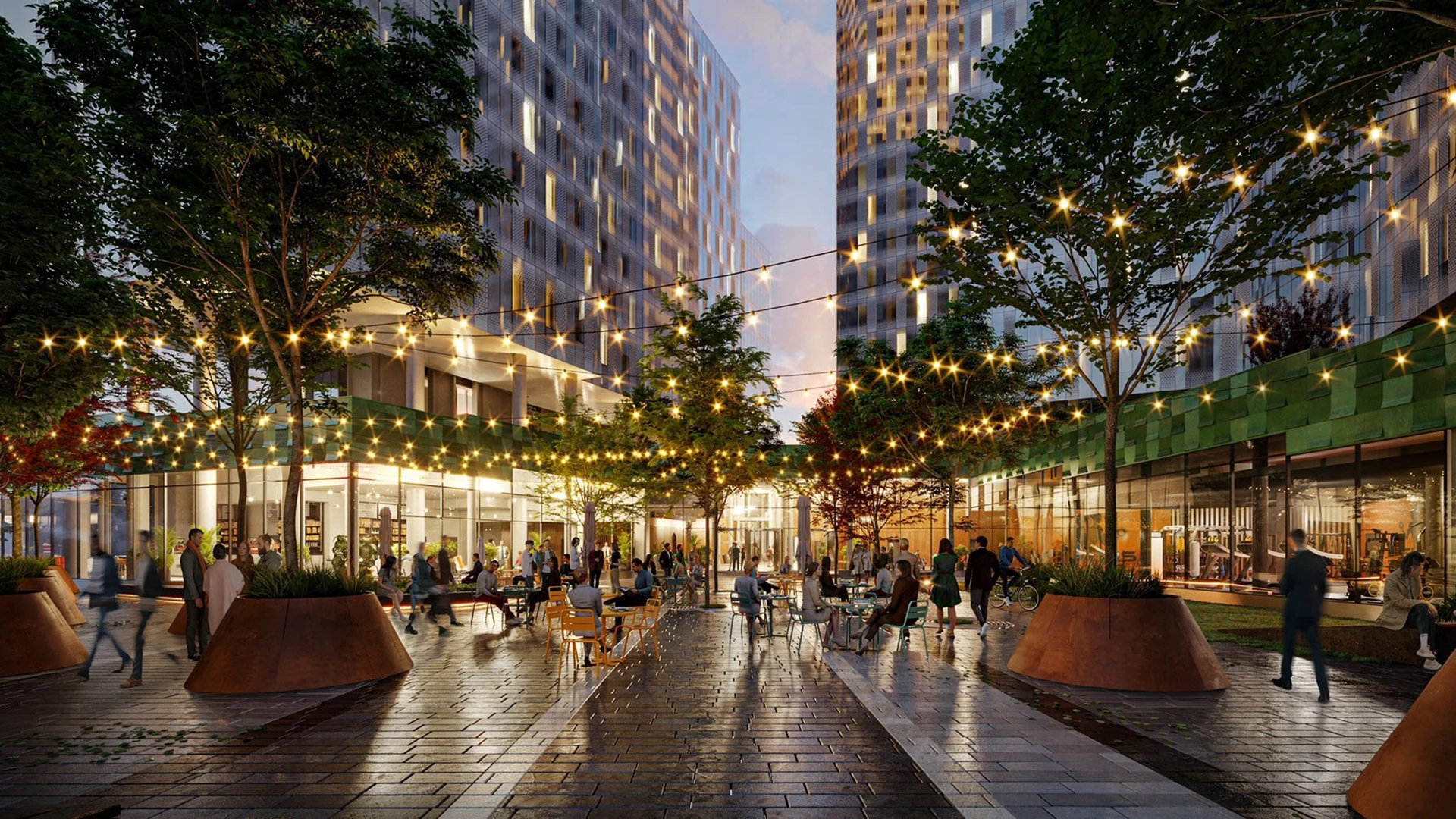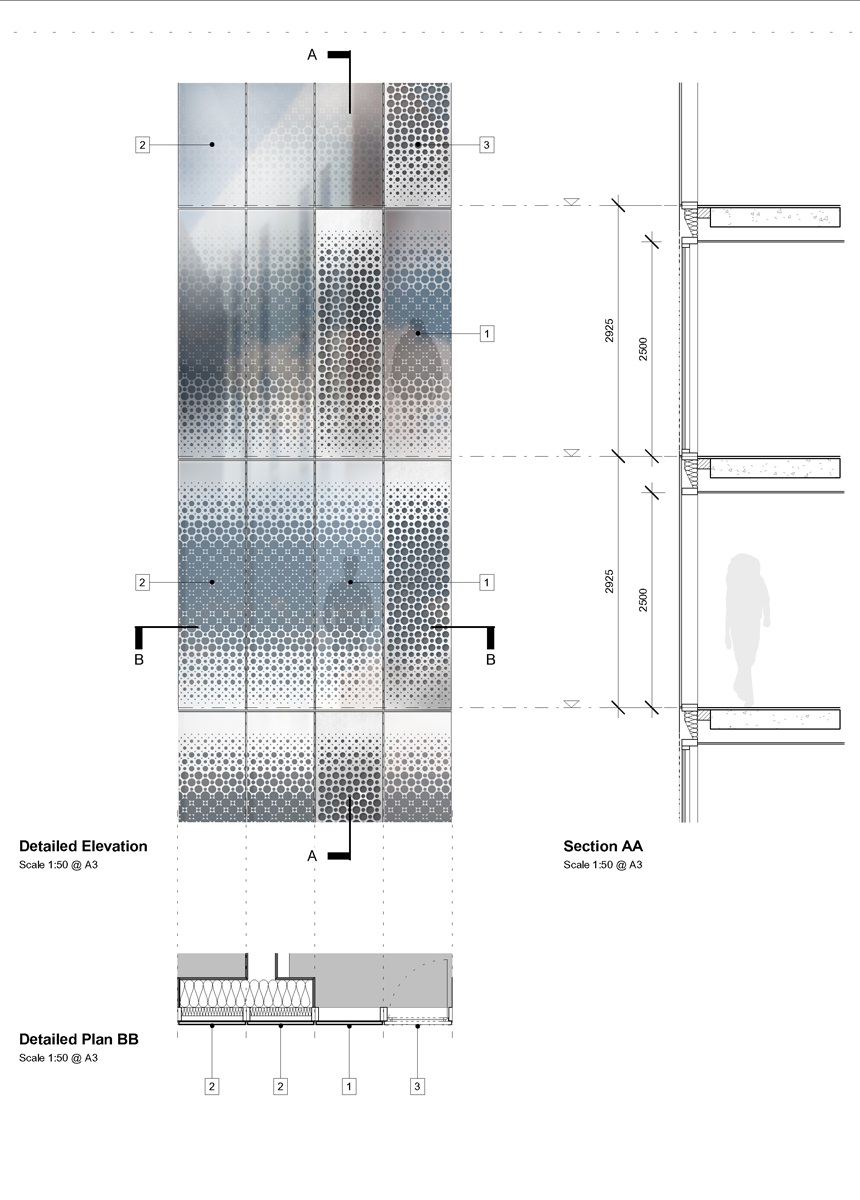




Unitised structurally silicone glazed system with fritted fixed DGU vision glazing with solar control coating, fritted shadow box panels, inward side hung vision panel with external perforated aluminium sheet.
Stick System with DGU vision glazing with solar control coating.
Glazed terracotta rainscreen
The creation of a new Community and public green park within a key area of regeneration close to the city centre, Plot 11 First Street will provide 2,224 co-living bedroom spaces. Co-living aims to simplify and improve the residents experience of living in the city centre by providing a quality place to live that is not only affordable and convenient, but provides a platform for residents to network and build personal friendships within the new Plot 11 community.
Spread over four separate buildings which step in height from 10 to 45 storeys, the emerging typology is split over 11 different accommodation types that range from the traditional 1- and 2-bedroom apartments that meet nationally prescribed space standards to 18m2 space saving studio apartments with ensuite. Three of the four buildings are arranged in a linear formation edging the North, East and South sides of the site. The fourth building is free in form and sits as more of an object in the landscape reaching up to 45 storeys. This helps to define and reinforce the street scape and the reinstatement of Newcastle Street provides a direct link from First Street to Hulme and the universities beyond the Mancunian Way.
All four buildings are to be constructed from a unitized glazing system with bespoke frit patternation and anodized metal rapid vents. A horizontal frit accentuates the stepping form of Buildings A/B/C which contrasts to the vertical frit pattern of Building D to emphasise the slender nature of the tower.
The four accommodation buildings are set over a large, greened landscape wedge, which enhances both the visual amenity and views to and from the scheme. The wedge is folded to respond to thoroughfares and to create multiple terraces at varying levels. The scheme incorporates 9,900m2 of new landscape of which 5,800m2 is accessible to the general public along with the addition of over 140 new trees. It is hoped this will boost biodiversity, improve air quality and aid in the mental health of not only the direct inhabitants but the wider community of First Street.
The landscape wedge houses a generous Health and well-being centre and café, both of which are accessible to the wider community. In addition to this the residents of Plot 11 have exclusive use of co-working areas, private and communal kitchen/dining along with private external landscape terraces and dog exercise areas. A large bookable dining and social amenity space will be provided at the top of the tower for use by residents providing panoramic views back to the city.
Assisting with the drive for achieving Net Zero Carbon buildings, the project will undergo a series of whole life carbon studies. The first step being to benchmark the current Embodied Carbon level, and with the assistance of the wider design team, formulate methods of reducing both the embodied carbon and lifetime cost of operations.